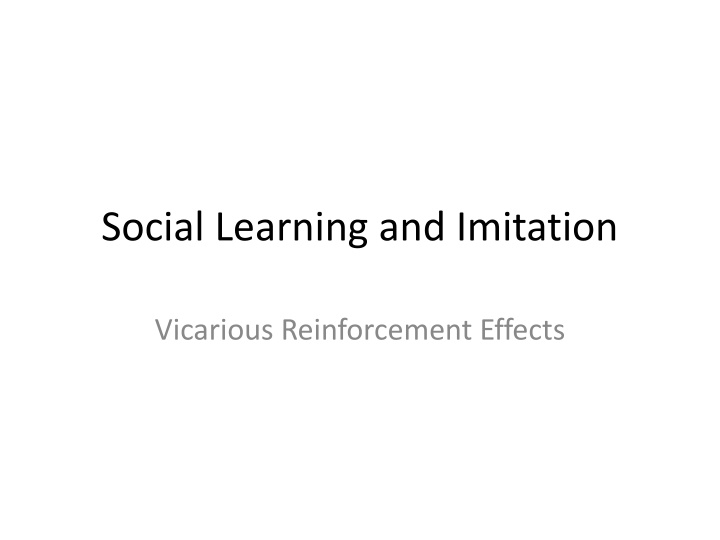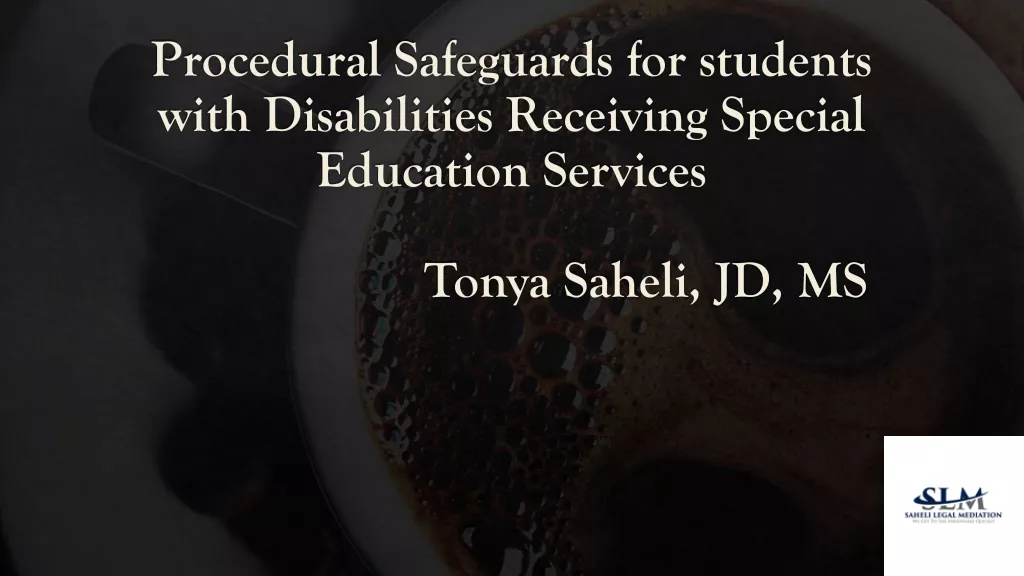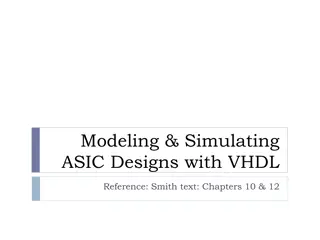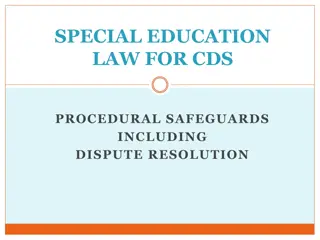ASIC Approved SMSF Auditor - Safeguards for Auditor Independence
Manoj Abichandani is an ASIC Approved SMSF Auditor and SMSF Specialist with a focus on safeguarding auditor independence in compliance with APES 110. The presentation covers auditing standards, legislation, testing independence, and applying safeguards to ensure independence. Including an agenda on auditing standards, the presentation delves into AUASB ASA 220 Independence requirements for audit engagements.
Download Presentation

Please find below an Image/Link to download the presentation.
The content on the website is provided AS IS for your information and personal use only. It may not be sold, licensed, or shared on other websites without obtaining consent from the author.If you encounter any issues during the download, it is possible that the publisher has removed the file from their server.
You are allowed to download the files provided on this website for personal or commercial use, subject to the condition that they are used lawfully. All files are the property of their respective owners.
The content on the website is provided AS IS for your information and personal use only. It may not be sold, licensed, or shared on other websites without obtaining consent from the author.
E N D
Presentation Transcript
Social Learning and Imitation Vicarious Reinforcement Effects
Albert Bandura Observational or Social Learning
Divided imitative behavior into 3 categories Same behavior: Copying behavior: Matched-dependent behavior
Divided imitative behavior into 3 categories Same behavior: Occurs when 2 or more individuals respond to same situation in same way All individuals involved learned independently to respond in particular way to particular stimulus Behavior triggered simultaneously when that S+ or related S+ occurs in environment
Divided imitative behavior into 3 categories Copying behavior: Guiding of one individuals behavior by another individual Provide guidance and corrective feedback Copying behavior the final copied behavior is reinforced and thus strengthened
Divided imitative behavior into 3 categories Matched-dependent behavior Observer is reinforced for blindly repeating actions of model Behavior of both individual maintained by reinforcement, but each individual s response is associated with different cues Original cue Eliciting cue for copied behavior Often occurs in group settings when not know what to do, so follow
Skinners view: Its nothing special! Agrees: Several steps to imitative learning Model s behavior is observed Observer matches the response of model Matching response is reinforced States: Must be maintained by some kind of reinforcer Model s behavior acts as discriminative stimulus: imitation = discriminative operant
Types of animal mimicry Animals show strong imitation and social learning Several kinds of low-level and innate forms of imitation Mimicry: copying physical appearance of one species by another Batesian or Mertensian mimicry: Relatively defenseless animal takes on the appearance of an animal that has better defenses Palatable viceroy butterfly mimicking the unpalatable monarch butterfly Note this is a genetic/morphologic adaptation, not a behavior change.
Types of animal mimicry Contagion. Two or more animals engage in similar behavior and that behavior is species typical Used to describe certain courtship displays when they involve coordinated movements between the male and female that are can sometimes appear to be virtual mirror images (Tinbergen, 1960). Behavior of one animal appears to serve as a releaser for the unlearned behavior of others (Thorpe, 1963). Are several kinds of contagion: Antipredatory Aggressive Appetitive
Types of animal mimicry Antipredatory behavior involves coordinated movement of group of animals for defensive purposes herding or flocking Aggressive contagion Coordinated movement of animals for aggressive purpose Mobbing in ducks/fowl Appetitive contagion One animal eating elicits eating behavior from another animal Satiated animal in presence of food will often resume eating upon the introduction of a hungry animal which begins eating (Tolman, 1964).
Motivational factors in animals: Social facilitation: animals Get things via imitiation Mere presence effect (Zajonc) mere presence of a conspecific is motivator The presence of a conspecific leads to increase in arousal which can lead to the retardation of acquisition of a novel (to-be- learned) response. But leads to stronger existing response Mere presence of a conspecific facilitates the acquisition of a new response (Gardner & Engel, 1971) or Conspecific may have the ability to reduce fear in the observer (Davitz & Mason, 1955; Morrison & Hill, 1967).
Why imitate? Incentive motivation Observation of aversive conditioning. Watch conspecific learning about a novel response that results in avoidance of painful stimulation (e.g., electric shock) Motivation to Imitate that novel response to avoid the painful stimulation (e.g., electric shock) Emotional cues provided by conspecific either escaping from or avoiding shock provides emotional cues of pain or fear that could instill fear response in observer.
Perceptual Factors Stimulus Enhancement: Activity of the demonstrator draws attention of observer to a particular object Partial explanation for facilitated acquisition of an observed discrimination. If demonstrator required to make contact with the positive stimulus: The positive stimulus is likely to attract observers attention Responding to it may be facilitated
Perceptual Factors Local Enhancement. Facilitation of learning is due to the drawing attention to locale/place associated with reinforcement Lorenz (1935): Ducks enclosed in pen may not react to a hole large enough for them to escape unless they happen to be near another duck as it is escaping from the pen. The sight of a duck passing through the hole in the pen may simply draw attention to the hole.
Perceptual Factors Local enhancement: Great tits and milk bottles Drinking from opened bottles readily generalized to an attempt to drink from a sealed bottle, which in turn led to trial-and-error puncturing of the top. The technique of pecking through the top of the bottle learned through observation But also likely that attention was drawn to the bottles by the presence of the feeding birds. Once at the bottles, the observers found reward and consumed it. Learning to identify milk bottles as a source of food readily generalize to other open bottles.
Observational Conditioning Observation of a performing demonstrator draws attention to the object being manipulated (e.g., the lever) BUT because observer's orientation to the object often followed immediately by food presentation to demonstrator: A Pavlovian association is established. Orient to Object food Observer learns relation between some part of the environment and the reinforcer (e.g., that the top of a box can be removed to reveal what is inside).
Observational conditioning Socially-transmitted food preferences (e.g., Galef, 1988a; Strupp & Levitsky, 1984) Eat what others in your species eat Canine Study: Lupfer Johnson & Ross, 2007 Model dog ate a particular flavor of food Played with subject dog for 10 minutes Subject dog given choice between food the model ate and a novel food Subject dogs ate the model dog s food on over 80% of occasions. Interestingly, poisons not as strongly social transmitted
Imprinting & Discriminated Following Imprinting. Occurs primarily in species w/o nest/den in which to protect young (e.g., fowl and grazing mammals), Young hatched (or born) in precocious state: allows them to move about following very brief period of inactivity. To compensate for their mobility (and increased predation risk): predisposition to follow first moving object they see. Generally mother But: laboratory experiments show almost any moving object can function as the object of imprinting Combines strongly predisposed behavior (following) with Considerable flexibility (learning) in the nature of the object that is followed.
True imitation True imitation = the copying of a novel or otherwise improbable act or utterance, or some act for which there is clearly no instinctive tendency (Thorpe, 1963, p. 135). Must control for Motivational effects on the observer produced either by the mere presence of the demonstrator or by the mere consequences of the behavior of the demonstrator. Observer s attention to that object Possibility that the demonstrator's manipulation of an object merely draws the observer's attention to that object (or one like it), Thus making the observer's manipulation of the object more probable. The simple pairing of a novel stimulus with a consequence e.g., a lit response key or the movement of a bar with the presentation of inaccessible food).
True imitation The target behavior cannot be already be part of the observing animal's repertoire (Clayton, 1978). Important test: Deferred imitation. Bandura : is an important difference between immediate imitation and deferred imitation (observational learning) Immediate imitation = reflexive response that is genetically predisposed Deferred imitation = more cognitive process.
Enculturation: Important factor in animal Imitation Enculturation. Degree to which the animals have had extensive interactions with humans Important for imitative learning by primates, dogs Enculturated chimpanzees and orangutans, domesticated dogs readily show signs of imitative learning Why? Reduces anxiety during human interactions? Increases attentiveness to social cues. Allows them to experience a form of learning to learn). For dogs, gets them acceptance into human societies, food, warmth, shelter, protection, etc.
Types of observational learning Gestural Imitation: gestures of a model are copied. Found in chimpanzees, dolphins, dogs and a parrot (Moore, 1992). Models were human rather than a conspecific. Little similarity between corresponding body parts of the observer and the demonstrator. Because objects were not involved, local and stimulus enhancement should be irrelevant. Each imitated gesture serves as a control for the others because it is the topography of the response that is important. A broad range of gestures have been shown to be imitated within a few seconds of demonstration
Types of observational learning Generalized imitation: Imitation of broad class of imitative behavior. Hayes and Hayes (1952) : Chimpanzee (Viki) learned to respond correctly to the command "Do this!" over a broad class of behavior. The establishment of a do as I do concept verifies that chimpanzees can imitate, Also in dogs Demonstrates that are capable of forming a generalized behavioral-matching concept Have acquired an imitation concept.
Types of observational learning Symbolic imitation. Highest level of imitative behavior, Behavior of the observer both Does not match that of the demonstrator Has differences which are explicit and produced for purpose of drawing attention to certain characteristics of the model. Human use of parody and caricature. Some evidence in chimps, great apes, dogs again
Banduras explanation Makes big distinction between basic imitation and observational learning Importance of information obtained by animal Why repeat behavior? Observing behavior allowed you to acquire information about outcome Not just mimicking, but learning about outcomes
Four Mechanisms of Modeling Attentional Processes the person doing the modeling must pay attention distinctiveness/characteristics of observer and model important Retentional Processes must be able to remember what happened! Cognitive abilities play a role here Motoric Processes must be able to physically reproduce behavior physical status important here Reward Processes reinforcement and punishment for continuing the behavior intrinsic (internal) vs extrinsic (external) reward play a role
Attentional processes Subject must attend to model Several influencing factors: Distinctiveness of model: age, sex, status Affective valence Complexity Prevalence Functional value to subject Characteristics of the observer important: Sensory capabilities Arousal level Perceptual set Past reinforcement history
Retentional processes Must be able to remember what was observed Two types of remembering Imaginal Verbal Several influencing factors Symbolic coding Cognitive organization Symbolic rehearsal
Motoric or Behavioral Production processes Must be able to physically reproduce the behavior Several influencing factors Physical capabilities Availability of component responses (do you know how to put the behaviors together) Self-observation and feedback Accuracy of the feedback
Reward or motivational processes Two functions of reinforcement: Informational and Rewarding! Creates expectation in observers that if do modeled behavior, they will get reinforced Acts as incentive for translating learning into performance Must have some motivation for repeating the behavior Must be rewarded yourself after you do the behavior Doesn t explain the motivation for the first try, but explains what maintains it Several factors External reinforcement Vicarious reinforcement Self-reinforcement
Bobo doll study Subjects: 36 boys and 36 girls enrolled in the Stanford University Nursery' School; ranged in age from 37 to 69 months; mean age of 52 months. Models: Male and a female adult served in the role of model.
Bobo doll study Experimental Design Subjects were divided into 8 experimental groups of 6 subjects each plus control group consisting of 24 subjects. Half of experimental subjects exposed to aggressive models Half exposed to models that were subdued and nonaggressive Groups further subdivided into male and female subjects. Half the subjects in the aggressive and nonaggressive conditions observed same-sex models remaining subjects in each group viewed models of the opposite sex. The control group had no prior exposure to the adult models ; was tested only in the generalization situation. subjects in the experimental and control groups were matched individually on the basis of ratings of their aggressive behavior in social interactions in the nursery school.
Bobo doll study Subjects were rated on four five-point rating scales by the experimenter and a nursery school teacher. Measured the extent to which subjects displayed Physical aggression Verbal aggression Aggression toward inanimate objects Aggressive inhibition. The latter scale provided a measure of aggression anxiety.
Experimental procedure Room contained a small table and chair, a tinker toy set, a mallet, and a 5- foot inflated Bobo doll. Children brought individually by experimenter to experimental play room After seating the child at a small table, the experimenter demonstrated how the subject could design pictures with potato prints and picture stickers provided, a familiar activity After settling subject in his corner, the experimenter escorted model to the opposite corner of the room and showed them the toy materials Experimenter explained that these materials = for the model to play with After the model was seated, the experimenter left the experimental room.
Bobo doll study Nonaggressive condition: Model assembled the tinker toys in a quiet subdued manner Totally ignoring the Bobo doll. Aggressive condition: Model began by assembling the tinker toys , After approximately 1 min elapsed, the model turned to the Bobo doll and spent the remainder of the period aggressing toward it.
To improve effectiveness of modeling: Model performed sufficiently novel patterns of responses which were unlikely to occur independently of the observation of the behavior of a model Thus, if a subject reproduced these behaviors in substantially identical form, could verify model
Aggressive Acts of Model Model exhibited distinctive aggressive acts : used to score imitative responses. Laid the Bobo doll on its side, sat on it and punched it repeatedly in the nose. Raised the Bobo doll, pick up the mallet and struck the doll on the head. Following the mallet aggression, the model tossed the doll up in the air aggressively and kicked it about the room. This sequence of physically aggressive acts was repeated approximately three times,
Aggressive Acts of Model Aggresssion interspersed with verbally aggressive responses such as "Sock him in the nose ," "Hit him down...," Throw him in the air ," "Kick him ," "Pow ," Also two consistent non-aggressive comments: "He keeps coming back for more" He sure is a tough fella.
Testing conditions: Aggression Arousal Prior to the test for imitation, all subjects (experimental and control) were subjected to mild aggression arousal to insure that they were under some degree of instigation to aggression. Would this get past IRB today?
Bait and Switch Following the exposure experience: Experimenter brought subject to an anteroom that contained relatively attractive toys: Experimenter explained that toys were for the subject to play .BUT . As soon as the subject became involved with the toys, the experimenter remarked that these were her very best toys Experimenter remarked that she did not let just anyone play with them, and that she had decided to reserve these toys for the other children. Essentially making toys off limits AFTER the kids started to play with them. Told subject they could play with any of the toys that were in the next room.
Toy Set up The experimental room contained variety of toys including some that could be used in imitative or nonimitative aggression, others tended to elicit predominantly nonaggressive forms of behavior. Aggressive toys: 3-foot Bobo doll a mallet and peg board two dart guns, tether ball with a face painted on it which hung from the ceiling. Nonaggressive toys: tea set crayons and coloring paper a ball two dolls three bears cars and trucks plastic farm animals.
Test for Delayed Aggression: 3 measures of Imitation Responses The subject spent 20 minutes in experimental room Imitation of physical aggression: acts of striking the Bobo doll with the mallet sitting on Bobo and punching it in the nose kicking the Bobo and tossing it in the air. Imitative verbal aggression: Subject repeats the phrases, E.g., "Sock him," "Hit him down," "Kick him," "Throw him in the air," or "Pow" Imitative nonaggressive verbal responses: Subject repeats, "He keeps coming back for more" "He sure is a tough fella"
Non-imitative aggressive responses Punches Bobs doll: Subject strikes, slaps, or pushes the doll aggressively. Nonimitative physical and verbal aggression: This category included: physically aggressive acts directed toward objects other than the Bobo any hostile remarks except for those in the verbal imitation category; e.g., "Shoot the Bobo," "Cut him," "Stupid ball," "Knock over people," "Horses fighting, biting" Aggressive gun play: Subject shoots darts or aims the guns and fires imaginary shots at objects in the room. Ratings were also made of the number of behavior units in which subjects played nonaggressively or sat quietly and did not play with any of the material at all.
Results Subjects in the aggression condition reproduced more physical and verbal aggressive behavior resembling that of the models Imitation was not confined to model's aggressive responses. Approximately 1/3 of the subjects in the aggressive condition repeated model's nonaggressive verbal responses None of the subjects in either nonaggressive or control groups made such remarks. No overall differences in nonimitative aggression:
Gender differences Influence of Sex of Model and Sex of Subjects on Imitation Hypothesis: boys are more prone than girls to imitate aggression exhibited by a model only partially confirmed. Boys reproduced more imitative physical aggression than girls, But the groups did not differ in their imitation of verbal aggression. Behavior of the male model exerted a greater influence than female model on the subjects' behavior in the generalization situation True for all groups Not just aggressive group.
Gender Differences Nonaggressive Behavior differences With the exception of expected sex differences, data from the nonaggressive response scores yielded few significant differences. Female subjects spent more time than boys in playing with dolls, with the tea set, and coloring The boys devoted significantly more time than girls to exploratory play with guns No sex differences were found in subjects use of the other stimulus objects, i.e., farm animals, cars, or tether ball.
What does this mean? Aggressive responses WERE modeled when given opportunity Exposure to inhibited models both decreased the probability of occurrence of aggressive behavior and restricted the range of behavior emitted by the subjects. Suggest that mere observation of aggression is a sufficient condition for producing imitative aggression in children regardless of the quality of the model-subject relationship






















